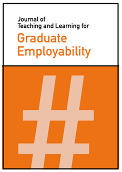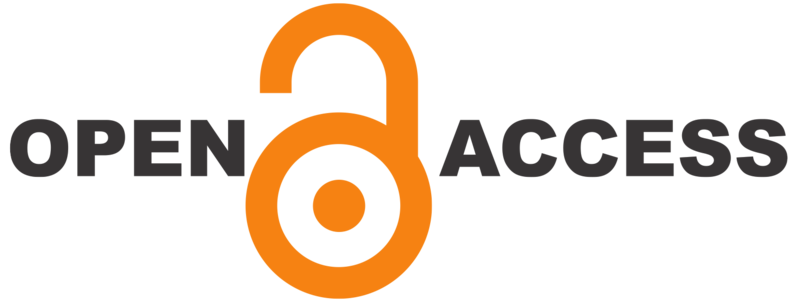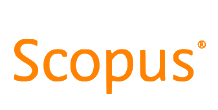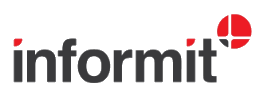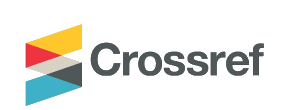The employability strengths American Millennials contribute to the health administration workforce: A workplace readiness study at two California public universities
DOI:
https://doi.org/10.21153/jtlge2023vol14no1art1701Abstract
This qualitative study examined employability, also referred to as workplace readiness strengths in this article, for American Millennial health administration baccalaureates. The primary researcher used data collected from focus groups and interviews conducted at two certified Association of University Programs in Health Administration (AUPHA) programs in California, USA. Participants (n = 71) belonged to one of 4 distinct groups: (a) health administration faculty, (b) internship preceptors, (c) alumni, and (d) undergraduate students (interns) enrolled in their internship program. Thematic content analysis was used to evaluate the collected qualitative data, after which descriptive statistics was applied to calculate the frequencies of emergent themes. The National Association of Colleges and Employers (NACE) Career Readiness Competencies, an employer and university validated list of Career Readiness Competencies for a Career-Ready Workforce, was used as a comparative framework for the workplace readiness strengths provided in the qualitative data. Six strength-based themes emerged, two of which comparatively aligned with two of the NACE Career Readiness Competencies. However, respondents indicated that the rest of the NACE Career Competencies were not overtly expressed by Millennials as workplace strengths and should be embedded into the health administration curriculum. This invaluable information can be used to update the AUPHA health administration curriculum and help their undergraduate students increase their employability index scores.Metrics
References
The American Association of Colleges and Universities (2023). High-impact practices. https://www.aacu.org/trending-topics/high-impact
Anderson, A. (2014). The impact of the Affordable Care Act on the health care workforce. The Heritage Foundation, 2887, 1-20. http://thf_media.s3.amazonaws.com/2014/pdf/BG2887.pdf
Association of University Programs in Health Administration (AUPHA). (2017, June). Certification documents. https://higherlogicdownload.s3.amazonaws.com/AUPHA/5c0a0c07-a7f7-413e-ad73-9b7133ca4c38/UploadedImages/Certification/Guidelines_for_Undergraduate_Certification_rev_2017.pdf
Association of University Programs in Health Administration (AUPHA). (2022a). Bachelor’s programs. https://www.aupha.org/membership/bachelorsprogram
Association of University Programs in Health Administration (AUPHA). (2022b). Certification overview. https://www.aupha.org/certification/certification
Association of University Programs in Health Administration (AUPHA). (2022c). Vision, mission, values, philosophy. https://www.aupha.org/about/visionmissionvalues
Augustin, F., & Stumpf, S. (2018). Talent diversity pipeline. The Journal of Health Administration Education 35(3), 371-393
Bauer-Wolf, J. (2018, February 22). Overconfident students, dubious employers. Inside Higher Ed. https://www.insidehighered.com/news/2018/02/23/study-students-believe-they-are-prepared-workplace-employers-disagree
Beal, B. (2016). Feedback fears for the 'Me, me, me' generation. Human Resource Management International Digest, 24(6), 27-29. https://doi.org/10.1108/HRMID-05-2016-0076
Bentley University. (2017). Multi-generational impacts on the workplace. Center for Women and Business http://d2f5upgbvkx8pz.cloudfront.net/sites/default/files/inline-files/Bentley CWB Generational Impacts Research Report Fall 2017_0.pdf
Bialik, K., & Fry, R. (2019, February 14). Millennial life: How young adulthood today compares with prior generations. Pew Research Center. https://www.pewsocialtrends.org/essay/millennial-life-how-young-adulthood-today-compares-with-prior-generations/
Cappelli, P. (2014, September 5). What employers really want? Workers they don’t have to train. The Washington Post. https://www.washingtonpost.com/news/on-leadership/wp/2014/09/05/what-employers-really-want-workers-they-dont-have-to-train/
Carmichael, S. G. (2016, August 17). Millennials are actually workaholics, according to research. Harvard Business Review, 22. https://hbr.org/2016/08/millennials-are-actually-workaholics-according-to-research
Carlson, S. (2022). Building tomorrow’s work force: What employers want you to know. The Chronicle of Higher Education.
Cohen, R. A., Zammitti, E. P., & Martinez, M. E. (2017, May). Health insurance coverage: Early release of estimates from the National Health Interview Survey, 2016. National Center for Health Statistics, Division of Health Interview Statistics. https://www.cdc.gov/nchs/data/nhis/earlyrelease/insur201705.pdf
Creswell, J. W. (2018). Research design: Qualitative and quantitative approaches. SAGE.
Deloitte. (2019). The Deloitte global Millennial survey 2019. https://www2.deloitte.com/content/dam/Deloitte/global/Documents/About-Deloitte/deloitte-2019-millennial-survey.pdf
DePaolo, C. A., & Wilkinson, K. (2014). Get your head into the clouds: Using word clouds for analyzing qualitative assessment data. TechTrends, 58(3), 38-44. https://doi.org/10.1007/s11528-014-0750-9
DeVaney, S. A. (2015). Understanding the millennial generation. Journal of Financial Service Professionals, 69(6).
Dimock, M. (2019, January 17). Defining generations: Where Millennials end and Generation Z begins. Pew Research Center. https://www.pewresearch.org/fact-tank/2019/01/17/where-millennials-end-and-generation-z-begins/
Economy, P. (2019January 15). The (Millennial) workplace of the future is almost here: These 3 things are about to change big time. Inc. Australia https://www.inc.com/peter-economy/the-millennial-workplace-of-future-is-almost-here-these-3-things-are-about-to-change-big-time.html
Finley, A. (2021). How college contributes to workforce success: Employer views on what matters most. Association of American Colleges and Universities. https://files.eric.ed.gov/fulltext/ED616977.pdf
Fischer, K. (2022, August 10). The path from college to career. The Chronicle of Higher Education. https://www.chronicle.com/report/free/the-path-from-college-to-career
Flaherty, E., & Bartels, S. J. (2019). Addressing the community-based geriatric healthcare workforce shortage by leveraging the potential of interprofessional teams. Journal of the American Geriatrics Society, 67(S2), S400-S408. https://doi.org/10.1111/jgs.15924
Frey, W. H. (2018, January). The Millennial generation: A demographic bridge to America’s diverse future. Brookings Metropolitan Policy Program. https://www.brookings.edu/research/millennials/
Friedman, J. (2018, January 10). Study: More students are enrolling in online courses. US News & World Report. https://web.archive.org/web/20200329074148/https://www.usnews.com/higher-education/online-education/articles/2018-01-11/study-more-students-are-enrolling-in-online-courses
Fry, R. (2018, April 11). Millennials are the largest generation in the US labor force. Pew Research Center. https://www.pewresearch.org/fact-tank/2018/04/11/millennials-largest-generation-us-labor-force/
Glandon, G. L. (2019). AUPHA and globalization: A perspective on the future. Frontiers in Public Health, 7, 48. https://doi.org/10.3389/fpubh.2019.00048
Hansen, M. (2021, May 18). The US Education system isn’t giving students what employers need. Harvard Business Review. https://hbr.org/2021/05/the-u-s-education-system-isnt-giving-students-what-employers-need
Hirsch, A. (2019, April 12). Why hiring managers’ expectations for new college graduates may be unrealistic. SHRM. https://www.shrm.org/resourcesandtools/hr-topics/talent-acquisition/pages/managing-hiring-managers-high-expectations-for-new-college-graduates.aspx
Jayadeva, R. (2018). Mentoring millennials: Perceptions and analysis. College and University, 93(2), 29-33.
Jenkins, R. (2018, January 18). This is why millennials care so much about work-life balance. Inc. https://web.archive.org/web/20220322155145/https://www.inc.com/ryan-jenkins/this-is-what-millennials-value-most-in-a-job-why.html
Kolb, D. A. (2015). Experiential learning: experience as the source of learning and development (2nd ed). Pearson Education.
Littlejohn, L., Campbell, J., & Collins-McNeil, J. (2012). Comparative analysis of nursing shortage. International Journal of Nursing, 1(1), 21-26. https://citeseerx.ist.psu.edu/document?repid=rep1&type=pdf&doi=3a93900f4a239481b78540b98e636a0ae2e12290#page=25
Lowell, B. L., & Gerova, S. G. (2004). Immigrants and the healthcare workforce: Profiles and shortages. Work and Occupations, 31(4), 474-498. https://doi.org/10.1177/0730888404268916
Lub, X., Nije Bijvank, M., Matthijs Bal, P., Blomme, R., & Schalk, R. (2012). Different or alike? Exploring the psychological contract and commitment of different generations of hospitality workers. International Journal of Contemporary Hospitality Management, 24(4), 553-573. https://doi.org/10.1108/09596111211226824
Mathews, D., Franzen-Castle, L., Colby, S., Kattelmann, K., Olfert, M., & White, A. (2015). Use of word clouds as a novel approach for analysis and presentation of qualitative data for program evaluation. Journal of Nutrition Education and Behavior, 47(4), S26. https://doi.org/10.1016/j.jneb.2015.04.071
Matthews, D., Guthrie, B., & Lindsay, E. (2015). Graduate outlook 2015: The report of the 2015 graduate outlook survey: Perspectives on graduate recruitment. Graduate Careers Australia. https://www.nagcas.org.au/documents/item/457
McKendrick, J. (2018, November 21). What do employees want? They want digital skills. Forbes. https://www.forbes.com/sites/joemckendrick/2018/11/21/what-do-employees-want-they-want-digital-skills/?sh=1dc3be9a7f56
National Association of Colleges and Employers Staff (2019, March 29). The four career competencies employers value the most. https://web.archive.org/web/20230221035824/https://www.naceweb.org/career-readiness/competencies/the-four-career-competencies-employers-value-most/
National Association of Colleges and Employers (2020 January 2020). Key attributes employers want to see on students’ resumes. https://web.archive.org/web/20220319163413/https://www.naceweb.org/talent-acquisition/candidate-selection/key-attributes-employers-want-to-see-on-students-resumes/
National Association of Colleges and Employers (2022a). What is NACE? About our association. https://www.naceweb.org/about-us/
National Association of Colleges and Employers (2022b). Career readiness: development and validation of the NACE career readiness competencies. https://www.naceweb.org/uploadedFiles/files/2022/resources/2022-nace-career-readiness-development-and-validation.pdf
National Association of Colleges and Employers (2023a). NACE strategic alliances. https://www.naceweb.org/about-us/strategic-alliances/
National Association of Colleges and Employers (2023b). What is career readiness? https://www.naceweb.org/career-readiness/competencies/career-readiness-defined/
Ngotngamwong, R. (2019). Working with Millennials. Human Behavior, Development and Society, 20(2), 62-73. https://so01.tci-thaijo.org/index.php/hbds/article/view/172606/133642
Oliver, B. (2015). Redefining graduate employability and work-integrated learning: Proposals for effective higher education in disrupted economies. Journal of Teaching and Learning for Graduate Employability, 6(1), 56-65. https://doi.org/10.21153/jtlge2015vol6no1art573
Perkins Collaborative Resource Network (n.d.). Employability skills. https://cte.ed.gov/initiatives/employability-skills-framework
Post, J. (2021, December 11). How to develop a positive attitude in the workplace. Business News Daily. https://web.archive.org/web/20220326142409/https://www.businessnewsdaily.com/6912-develop-positive-mindset.html
PricewaterhouseCoopers. (2013). PwC’s NextGen: A global generational study. Summary of findings. https://www.pwc.com/gx/en/hr-management-services/pdf/pwc-nextgen-study-2013.pdf
Ramlo, S. (2011). Using word clouds to visually present Q methodology data and findings. Journal of Human Subjectivity, 9(2), 95-108.
Reed, T. (2018, June 28). New survey: Only 4 in 10 U.S. college students feel well-prepared for their future careers; perceptions of preparedness vary widely by gender. McGraw Hill. https://www.mheducation.com/news-insights/press-releases/2018-future-workforce-survey-results.html
Rigoni, B., & Asplund, J. (2016, September 1). Developing employees’ strengths boosts sales, profit, and engagement. Harvard Business Review https://hbr.org/2016/09/developing-employees-strengths-boosts-sales-profit-and-engagement
Sellars, B. B., Sherrod, D. R., & Chappel-Aiken, L. (2018). Using word clouds to analyze qualitative data in clinical settings. Nursing Management, 49(10), 51-53. https://doi.org/10.1097/01.NUMA.0000546207.70574.c3
Shwarting, T. (2018, April 12). In defense of Millennials: Embracing their strengths for an inclusive work culture. Forbes. https://www.forbes.com/sites/ellevate/2018/04/12/in-defense-of-millennials-embracing-their-strengths-for-an-inclusive-work-culture/?sh=591b88ff13f3
Sorenson, S. (2014). How employees’ strengths make your company stronger. Gallup Business Journal. https://www.gallup.com/workplace/231605/employees-strengths-company-stronger.aspx
U.S. Bureau of Labor Statistics. (2022). The employment situation. https://www.bls.gov/news.release/archives/empsit_11042022.pdf
U.S. Department of Health and Human Services. (2022, May 3). Impact of the COVID-19 pandemic on the hospital and outpatient clinician workforce : Challenges and policy responses. https://aspe.hhs.gov/reports/covid-19-health-care-workforce
Vrain, E., & Lovett, A. (2020). Using word clouds to present farmers’ perceptions of advisory services on pollution mitigation measures. Journal of Environmental Planning and Management, 63(6), 1132-1149. https://doi.org/10.1080/09640568.2019.1638232
Wilson, A. B., & Nowak, A. P. (2019). Why a health administration internship. Research in Health Science, 4(3), 142-151. http://dx.doi.org/10.22158/rhs.v4n3p142
WordClouds.com (2023). Free online Wordcloud generator. https://www.wordclouds.com/
Wyman, N. (2018, August 3). Hiring is on the rise, but are college grads prepared for the world of work? Forbes. https://www.forbes.com/sites/nicholaswyman/2018/08/03/hiring-is-on-the-rise-but-are-college-grads-prepared-for-the-world-of-work/?sh=32c4384e7e6d
Downloads
Published
Issue
Section
License
Copyright (c) 2023 Frankline Augustin, Richard Narad, Brendan Moran, Kaitlin Bahr

This work is licensed under a Creative Commons Attribution-NonCommercial 4.0 International License.

